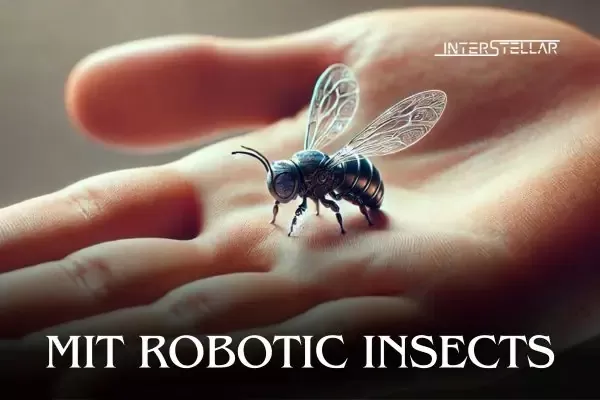MIT's Tiny Robots: The Future of Artificial Pollination in Agriculture
In a world where pollination is crucial to our food supply, the growing need for sustainable solutions is driving innovation in agriculture. Imagine a future where tiny robots take on the role of pollinators, buzzing through farms and orchards, aiding in the process of artificial pollination. While it might sound like something straight out of a science fiction movie, researchers at the Massachusetts Institute of Technology (MIT)

have made this a reality with their creation of bug-sized robots. These flying robots, designed for artificial pollination, could revolutionize farming, especially in high-tech, controlled environments like vertical farms.
Bug-Sized Robots: A Technological Marvel
These robots, weighing just 0.8 grams—less than the weight of a paperclip—are designed to mimic the natural process of pollination, much like bees do in nature. Despite their tiny size, they can remain airborne for up to 1,000 seconds, or approximately 17 minutes, which is a remarkable feat for such a small machine. The robots are equipped with the ability to perform high-speed acrobatic maneuvers, including double aerial flips, which demonstrate their agility and precision in flight.
MIT’s approach to developing these robots begins with the creation of lightweight artificial muscles that are power-dense. These muscles, paired with a flapping wing structure, allow the robots to achieve the necessary compact and lightweight design required for stable flight. This innovative combination of design and materials is what enables these robots to perform tasks that would otherwise be impossible for heavier, more traditional drones.
Artificial Pollination: The Key Use Case
The primary application of these robots is in artificial pollination, a task that is crucial to maintaining agricultural productivity. Pollinators, such as bees, play a vital role in fertilizing crops and ensuring the growth of fruits and vegetables. However, with the growing challenges posed by bee population decline and environmental factors, researchers are turning to technology to fill the gap.
While the robots aren't intended to replace honeybees entirely, they provide a valuable solution for situations where bees may not be feasible or safe. For example, indoor farming environments or high-tech vertical farms, where it is difficult to have live honeybee colonies due to space constraints or safety concerns, could greatly benefit from these tiny flying robots.
The robots could autonomously pollinate crops, providing a potential solution to the challenges of traditional farming, especially in controlled environments that rely on precision and consistency.
Challenges and Future Improvements
Despite the remarkable progress, these tiny robots are still a long way from matching natural pollinators like bees. The researchers at MIT are aware that in order for these robots to be truly effective, they need to improve both their flight time and precision. Currently, while the robots can stay airborne for a few minutes, further development is required to enable them to perform tasks such as landing and taking off from flowers with greater accuracy.
As the technology evolves, these robots could become an essential part of agriculture by improving pollination efficiency in both outdoor and indoor settings. However, significant work is still needed to perfect the system, including enhancing their ability to work in natural environments without relying on human intervention.
The Potential of Micro-Robotics in Agriculture
The creation of bug-sized robots represents a significant step forward in the field of micro-robotics and holds incredible promise for the future of agriculture. As the robots continue to improve in terms of flight duration, landing precision, and autonomy, they could play a crucial role in meeting the food demands of an ever-growing global population. They could also contribute to a more sustainable and efficient agricultural system, especially in regions where traditional pollinators are struggling to survive.
MIT’s tiny robots are a testament to the power of innovation and the potential of technology to solve some of the world's most pressing problems, including the decline of natural pollinators. Though we’re not yet seeing these robots buzzing around our fields, the developments made so far are laying the groundwork for a future where artificial pollination becomes a reliable and effective solution.
Conclusion: A Step Toward the Future of Farming
The development of bug-sized flying robots marks an exciting advancement in the world of micro-robotics and agriculture. While there’s still a long way to go before these robots can match the capabilities of natural pollinators, their potential in indoor farming and vertical agriculture is already showing great promise. As MIT’s team continues to enhance the robots' flight capabilities and pollination precision, we could be looking at a future where artificial pollination becomes a regular part of sustainable farming practices.
These robots represent just one example of how technology can help address the challenges faced by modern agriculture. With continued innovation and investment in micro-robotics, the future of farming looks brighter than ever.
What's Your Reaction?

















